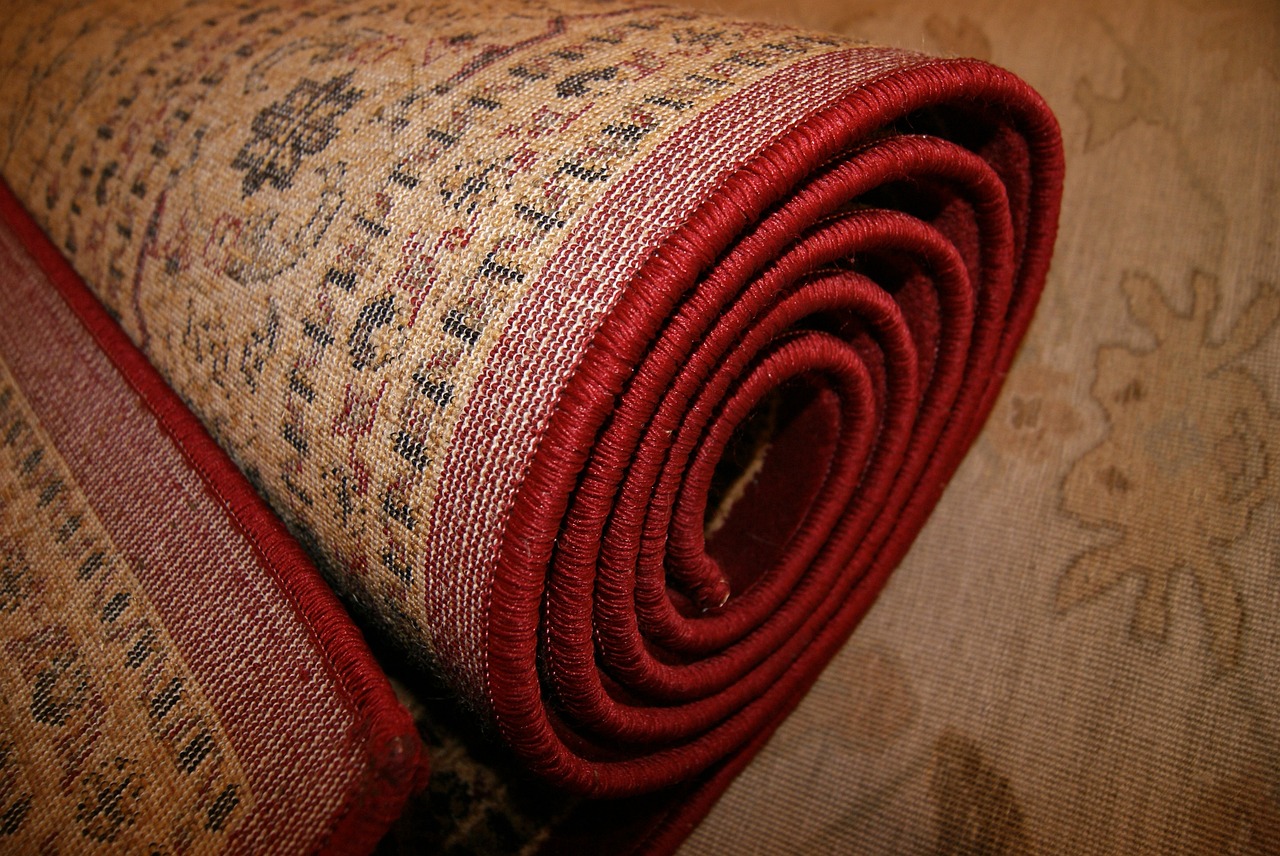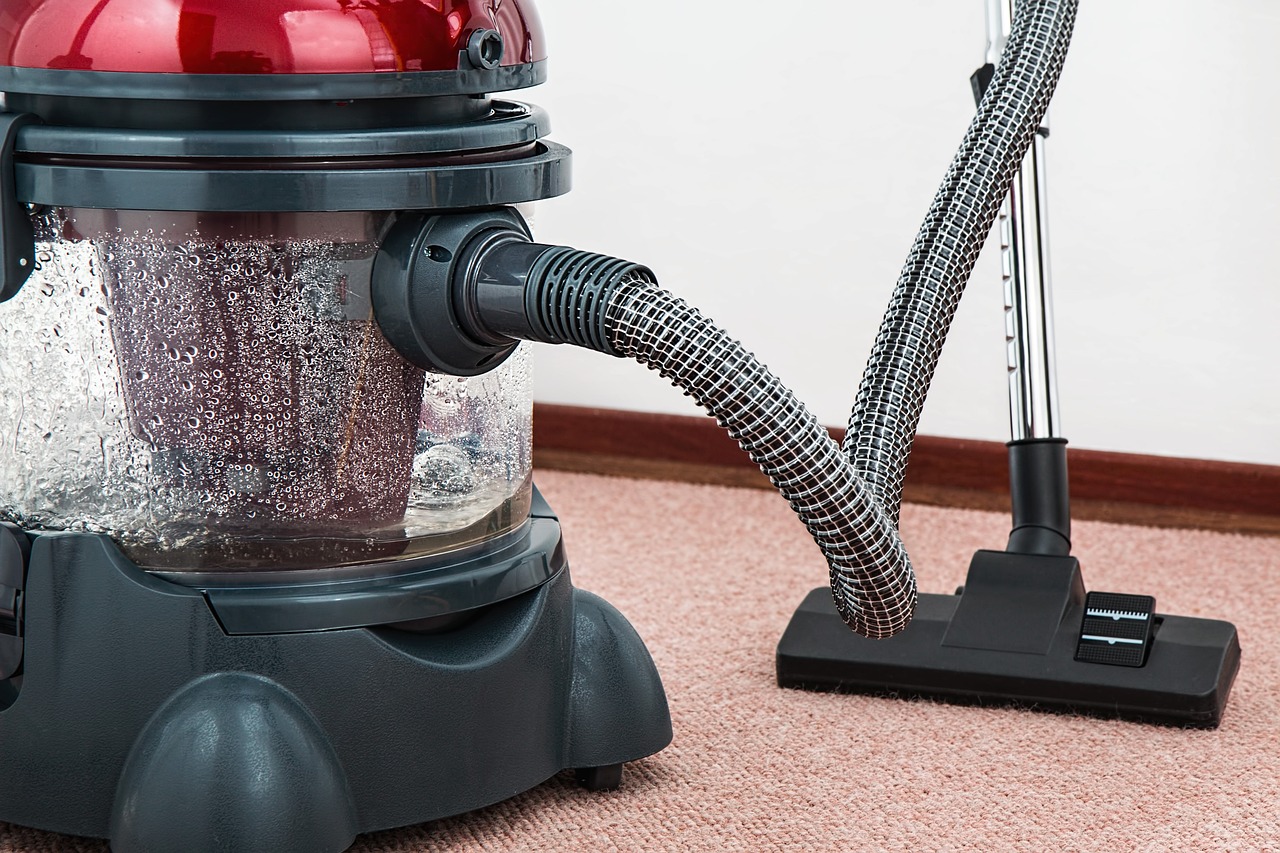Carpet Beetles In Florida

Florida's warm and humid climate provides an ideal environment for pests, including carpet beetles. The state's relatively mild winters and consistent temperatures create conditions conducive to year-round insect activity. This means that while carpet beetles might have a seasonal presence in some regions, they can persist throughout the year in Florida.
In this blog, you will learn how to identify carpet beetles, how to recognize signs of damage, and how to get rid of carpet beetles for good.
Carpet beetles are small insects, measuring around 1/8 inches long, depending on the species. Their appearance can vary widely. Some species have a solid color, such as black, brown, or white, while others might have mottled patterns of various colors. The body shape is generally oval or rounded, and they have a protective covering on their wings.
These beetles are known for their ability to feed on almost anything organic, particularly those containing keratin, a protein found in animal-based products. The name "carpet beetle" might suggest a preference for carpet fibers, but these insects can infest many items, including clothing, upholstery, rugs, curtains, stored food products, and more.
How To Identify Carpet Beetles
There are several species of carpet beetles, each with slightly different habits and characteristics, but they generally share common behaviors:
- Life Cycle: Carpet beetles undergo complete metamorphosis, which means they have four distinct life stages: egg, larva, pupa, and adult. The larval stage is the most destructive, as these larvae are the ones that feed on organic materials. Depending on the species and environmental conditions, the lifecycle can take several months to complete.
- Diet: The larvae feed on organic materials, with a preference for items rich in keratin. This can include wool, silk, feathers, hair, fur, and even natural fibers in upholstery and carpets.
- Appearance: The appearance of carpet beetle larvae can vary slightly between species, but they are generally small, elongated, and covered in fine bristle-like hairs. Their color can range from white to shades of brown.
- Adults: Adult carpet beetles are typically small insects with an oval or round shape. They vary in color depending on the species, with some being black, brown, or mottled patterns. Unlike larvae, adult carpet beetles do not cause damage to materials as they primarily feed on pollen and nectar.
- Habitat: Carpet beetles prefer dark, secluded areas where they can find their preferred food sources. This might include areas under furniture, closets, and stored items.
- Damage: The larvae of carpet beetles are responsible for causing damage to various materials, particularly natural fibers. They create irregular holes and thinning areas as they feed, which can lead to significant damage over time if not addressed.
Do Carpet Beetles Bite?
Carpet beetles do not bite humans. Unlike certain pests like bed bugs or mosquitoes, carpet beetles are not blood-feeding insects and do not have mouthparts designed for piercing skin and feeding on blood. Therefore, they are not capable of biting humans or animals to feed on their blood.
However, some people might experience skin irritation or allergic reactions due to the tiny, bristle-like hairs that carpet beetle larvae have on their bodies. These hairs, also known as "urticating hairs," can be released into the air when the larvae are disturbed or crushed. These hairs can come into contact with human skin and cause a rash or itchiness in sensitive individuals.
Are Carpet Beetles Dangerous?
Carpet beetles are not dangerous to humans in the same way that some other pests, like mosquitoes or ticks, can transmit diseases or cause direct harm through biting. However, carpet beetles can still be a nuisance and cause problems, primarily related to property damage and potential allergic reactions.
Here are the ways in which carpet beetles can be considered problematic:
- Property Damage: Carpet beetle larvae are the stage of these insects that can cause damage. They feed on various organic materials, particularly those containing keratin, such as wool, silk, feathers, and hair. This can lead to damage to clothing, upholstery, carpets, rugs, and other fabrics. While they might not pose a direct threat to your health, they can damage valuable belongings.
- Allergic Reactions: Some individuals might experience skin irritation or allergic reactions when they come into contact with the tiny, bristle-like hairs that carpet beetle larvae have on their bodies. These hairs can become airborne and cause itching or a rash in sensitive individuals.
- Contamination of Stored Food: Some species of carpet beetles might infest stored food products, especially those containing animal products. This can lead to contamination and make the food unfit for consumption. They are considered a common kitchen pantry pest.
- Asthma Triggers: In rare cases, the presence of carpet beetles and their shed skins can contribute to indoor air quality issues. For individuals with allergies or asthma, these particles might act as triggers.
Common Types of Carpet Beetles in Florida
In Florida, as in many other regions, several types of carpet beetles can be found. These insects belong to the family Dermestidae and are known for their ability to feed on various organic materials, including textiles, fur, feathers, and even stored food products. Here are some common species of carpet beetles that you might encounter in Florida:
Black Carpet Beetle (Attagenus unicolor)
This species is one of the most common carpet beetles in Florida and throughout North America. Adult black carpet beetles are usually dark brown to black and have an oval shape. They're about 1/8 to 1/4 inch in length. The larvae are elongated and covered in short, stiff hairs. They are known for their destructive feeding habits and can cause damage to a wide range of materials.
Varied Carpet Beetle (Anthrenus verbasci)
Another prevalent species in Florida, the varied carpet beetle, is known for its mottled appearance, with patches of white, brown, and grayish-yellow scales on its back. Adult varied carpet beetles are small, about 1/8 to 1/4 inch long. Their larvae are well-known for their bristle-like hairs and their ability to cause damage to fabrics, especially natural fibers.
Furniture Carpet Beetle (Anthrenus flavipes)
This species is similar in appearance to the varied carpet beetle, but it tends to be more uniformly colored. It can be brown or black with a slightly rounded shape. The larvae have characteristic bristle-like hairs and can damage fabrics, upholstery, and other materials.
Common Carpet Beetle (Anthrenus scrophulariae)
The common carpet beetle is a bit larger than the other species, with adults reaching up to 1/4 inch in length. Their coloration can vary, often being black with a mix of white, brown, and yellow scales. The larvae of the common carpet beetle are also covered in hairs and can cause damage to textiles.

Signs of Carpet Beetle Damage
Carpet beetle damage can manifest in various ways, primarily in the form of visible changes to fabrics, textiles, and other organic materials. If you suspect a carpet beetle infestation, here are the signs of damage to look out for:
- Irregular Holes: One of the most common signs of carpet beetle damage is the presence of irregularly shaped holes in fabrics. These holes are often smaller and less defined than those caused by other pests like clothes moths. They can be scattered across the surface of the material.
- Thinning Areas: Carpet beetle larvae feed on natural fibers, such as wool, silk, feathers, and hair. As they consume the fibers, they create thinning areas that might appear translucent or weakened. This can lead to a worn or frayed appearance in affected items.
- Bare Patches: In severe infestations, carpet beetle larvae can consume enough material to create noticeable bare patches on fabrics or textiles. These patches can be particularly problematic in rugs, carpets, and clothing.
- Shed Skins: As carpet beetle larvae grow, they shed their skins. Look for small, discarded exoskeletons near infested areas, such as under furniture, along baseboards, or in closets.
- Fine Dust or Powder: Carpet beetle larvae might leave behind a powdery residue as they consume materials. This residue can accumulate in affected areas.
- Insect Activity: If you spot small, slow-moving larvae crawling on surfaces or near fabrics, it's a strong indication of carpet beetle activity. Adult carpet beetles might also be visible, often attracted to light sources.
- Allergic Reactions: Some people might experience skin irritation or allergic reactions due to the tiny, bristle-like hairs of carpet beetle larvae. If you notice unexplained skin irritation, especially in areas where infestation is suspected, it could be a sign.
How To Get Rid of Carpet Beetles In Florida
Getting rid of carpet beetles requires a systematic approach that includes cleaning, treatment, and prevention. Here's a step-by-step guide on how to effectively eliminate carpet beetles from your home:
1. Identify the Infestation
Confirm that you're dealing with carpet beetles by recognizing signs such as irregular holes in fabrics, thinning areas, shed skins, crawling larvae, or adult beetles.
2. Thorough Cleaning
Start by thoroughly cleaning your home to remove existing beetles, larvae, and eggs:
- Vacuum all carpets, rugs, upholstery, and infested areas. Pay special attention to hidden corners, baseboards, and underneath furniture.
- Dispose of the vacuum bag outside your home to prevent any live insects from re-entering.
- Shake and beat rugs and fabrics outdoors to dislodge any hidden pests.
3. Launder and Dry Clean
Wash or dry-clean infested clothing, linens, and textiles using hot water or high heat settings. This will help kill any remaining beetles, larvae, or eggs.
4. Freezing
For delicate items that can't be washed, seal them in a plastic bag and place them in the freezer for a few days. Cold temperatures will eliminate the pests.
5. Airtight Storage
Store vulnerable items, like woolens and natural fiber fabrics, in airtight containers or vacuum-sealed bags to prevent reinfestation.
6. Sunlight and Fresh Air
Expose infested items to direct sunlight and fresh air, as carpet beetles dislike these conditions.
7. Insecticides
Consider using insecticides specifically formulated for carpet beetle control. Apply them in cracks, crevices, and infestation-prone areas. Always follow the instructions on the label and take necessary safety precautions. Opt for eco-friendly options if possible.
After applying the treatment, make sure to vacuum thoroughly to get rid of dead insects.
8. Professional Pest Control
If the infestation is severe or your efforts haven't yielded results, consult a professional pest control company. Experts can assess the situation accurately and employ effective treatments.
9. Preventive Measures
After eliminating the infestation, take preventive measures to avoid future outbreaks:
- Vacuum regularly and maintain good hygiene practices through regular cleaning.
- Seal cracks and gaps in walls, windows, and doors to prevent beetle entry.
- Store susceptible items in airtight containers or vacuum-sealed bags.
- Use natural repellents like cedar or lavender to deter carpet beetles.
10. Stay Vigilant
Monitor your home regularly for signs of re-infestation. Early detection can prevent a minor issue from becoming a major problem.

Call Professional Exterminators
If you are having an issue with pests in your home, Blue Door Pest Control has the solution. Our team of experienced Jupiter exterminators is here to help you ever step of the way, so don't hesitate to reach out today!
